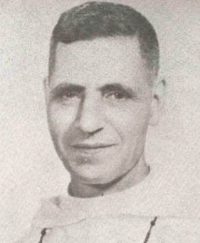The Headquarters of General MacArthur announced today the entry of his troops in Baguio, after wiping out the Japanese defenses. It took the liberators four months at the cost of a great number of men and materials to scale the mountain, blow up machine gun nests, seal thousands of caves and exterminate their defenders, and take possession of this city. Like mountain cats, the remaining Japanese continue fighting in the eastern slopes and from the top of Mt. Sto. Tomas which overlook the zigzag. An important nucleus of resistance is the Cagayan Valley. The two Ilocos regions, La Union and part of the Mountain Province, have been liberated by guerilla forces.
Thousands of residents of this summer city had been infiltrating through Japanese defenses until they reached American lines, guided by Igorots who are as loyal as they were experts in avoiding Japanese attention, in climbing rocks and jumping over precipices. Many had died in the bombings of Baguio, others succumbed to the hardship of two months of wanderings in caves and mountains or a week on the road until they reached Tubao where they were picked up by American troops.
Recto, Alunan, Paredes, Sison and De las Alas, the ex-ministers of the short-lived Republic had been captured and detained. Manuel Roxas was liberated. Laurel, Osías and Aquino fled to Japan. We could not tell whether on their own volition or forced by Yamashita. Part of those liberated had been brought to Manila and many of them are quartered in the University of Santo Tomas. They had lost their homes in Baguio and their old houses in Manila had been destroyed.
The Army in Baguio did not commit the same systematic abuses and massacre as what was planned and executed in Manila, Laguna, Rizal, Batangas, Tayabas and in other provinces. Either they did not receive the order or they simply failed to implement it. Of course, it was easier for the victims to evade their henchmen and elude their herodian plans in the thicknesses and ruggedness of the mountains. However, at the last hour, the wriggling tail of the dying dragon killed numerous groups of unsuspecting persons, the incapacitated, the helpless who could not save themselves in time. Hundreds, or perhaps thousands of innocent lives were sacrificed.
A number of Japanese civilians and soldiers have passed over to the American lines. Among them are Mr. Yokoyama, the Japanese consul in Baguio; Mr. Okano, the head of the Religious Section of the Army and a good Catholic who had given not a few favors to the American prisoners and to the members of religious congregations; Mr. Matsuda, a professor of Nippongo, and somebody else whose surrender or capture we are not sure about.
